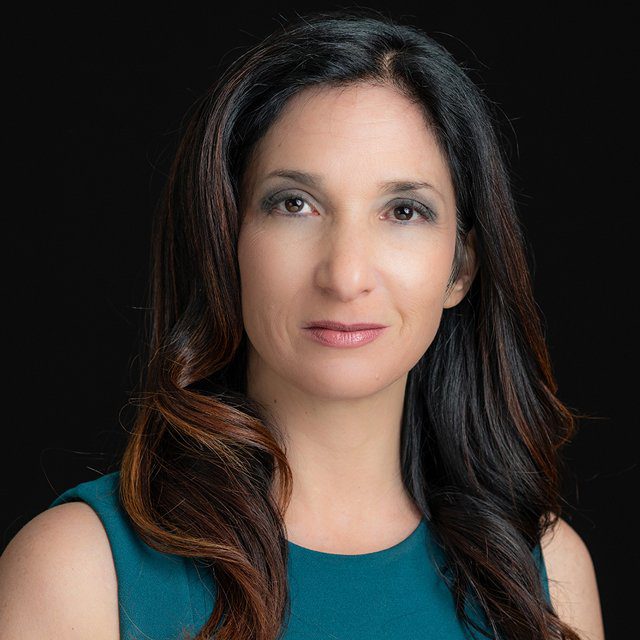U.S. Economy on Track for Major Crisis in 2024: Nomi Prins

A major financial crisis will likely hit in 2024, when “the United States could see the size of its economy relegated to third place in the world behind China and India,” Nomi Prins, formerly a managing director at Goldman Sachs, argues in an interview with ThinkAdvisor.
Indeed, America “will see more and more economic fragility as we head into the next [presidential] election,” according to Prins, a harsh critic of the Federal Reserve and the U.S. banking system.
The economist, dismayed by “unethical” practices in banking, left Goldman in 2002 to expose “how the financial systems are manipulated to serve the interests of an elite few at the expense of everyone else,” according to her website.
Hence, she became an investigative journalist and the author of eight books, including bestsellers “Collusion” and “All the Presidents’ Bankers.”
Her newest exposé is “Permanent Distortion: How Financial Markets Abandoned the Real Economy Forever” (Public Affairs — Oct. 11, 2022).
Permanent distortion is the way Prins describes the gap between the real economy, where many in the general population suffer financially, and the other U.S. economy, which is dominated by Wall Street and the banks.
The latter has supercharged the financial system, while selling out the average workers, she contends.
In the interview, Prins, a popular keynote speaker who advocates for economic reform, likens the Fed’s “fabricating money from nowhere and injecting it into the larger financial system” to “a virus in your body that hasn’t taken hold and released symptoms. It’s a latent part of the economy, of our markets, our banking system,” she says. “It’s an addiction.”
Thus, current markets are expecting the Fed to say, “The economy is starting to buckle — so we’re going to give you guys money,” Prins says.
All this began with the Fed’s quantitative easing policy during and after the 2008 financial crisis, which grew into “a habit, then a compulsion and finally an addiction,” she maintains.
However, in the interview, Prins, who has a doctorate in international strategic studies, discusses what she sees as a coming era of decentralized finance that averts the “so badly warped” banking system.
Prins, who, at Goldman, was responsible for the analytics underlying credit derivatives, previously was a senior managing director at Bear Stearns, a senior strategist at Lehman Bros. and an analyst at Chase Manhattan Bank.
ThinkAdvisor recently held an interview with Prins, who was speaking by phone from her Los Angeles base.
Discussing the central bank’s interest-raising strategy aiming to cool down the economy leading to fewer jobs and low inflation, she remarks: “The Fed has a very convoluted way of looking at things.”
Here are highlights of our conversation:
THINKADVISOR: In your new book, “Permanent Distortion: How the Financial Markets Abandoned the Real Economy Forever,” you write that changes brought by permanent distortion “have only just begun” and that “this will be the biggest transformation the world has ever seen.” Please explain “permanent distortion.”
PRINS: It’s the gap between the real economy and the financial markets in terms of how money flows through them.
One of the major factors of permanent distortion is that the Fed creates money in the face of any crisis. They fabricate money from nowhere and inject it into the larger financial system.
Now they’ve done it to the tune of $9 trillion.
Are you saying that it has become the Fed’s M.O.?
It’s like a virus in your body that hasn’t taken hold and released symptoms. But it’s there.
It’s a latent part of the economy, of our markets, our banking system. That’s why I call it a permanent distortion.
What has it resulted in?
Since the financial crisis of 2008, markets, Wall Street and corporations have been conditioned to the availability of very cheap money.
That was one of the reasons the markets moved higher much more quickly than the economy grew.
What’s your take on current markets?
Right now, the markets are concerned — and this is part of the distortion — waiting for the Fed to turn around and say, “The economy is starting to buckle; so we’re going to give you guys money.”
It’s that addiction and conditioning that at some point, the money [injection] will resume. Markets don’t like not knowing when that will be.
“We should have another major crisis in 2024 if patterns hold,” you write. Why is this your forecast?
There are a lot of problems brewing. They will manifest in 2024 because moving toward a presidential election, parties and politics tend to ignore, even more so, what’s happening in the economy to try to get reelected.
That creates even less a connection than we already have to directing money, resources, planning and strategy into the real economy.
Our economy hasn’t really been growing relative to our markets.
You write of two patterns of “crisis and recession, one based on debt and leverage problems; the other on flaws inherent to the monetary and financial system itself.” Please discuss.
We’ve had a series of political and economic problems that have popped into the curve during election years [in the 21st century].
We’ve seen major financial crises or major economic problems that have led to major political shifts. We saw it in 2008, when we had the big financial crisis and an outpouring of money to save the banking system. That was happening around the same time as the [presidential] election.
The economy was unstable, but it got help from the [Federal Reserve]. That was one of the elements of distortion.
What else has been part of the patterns?




